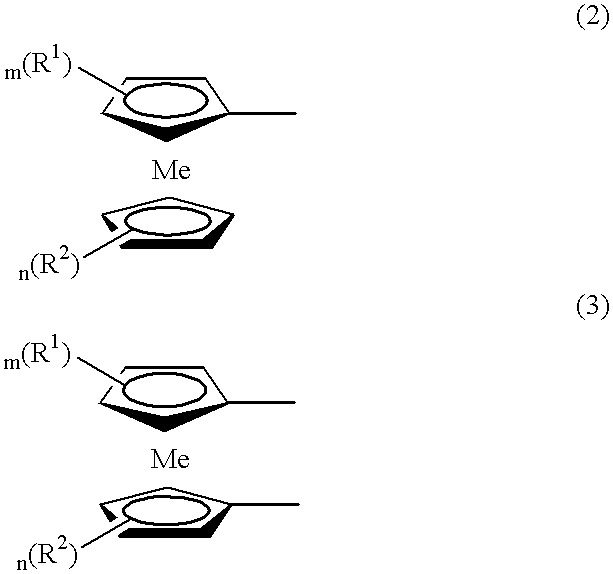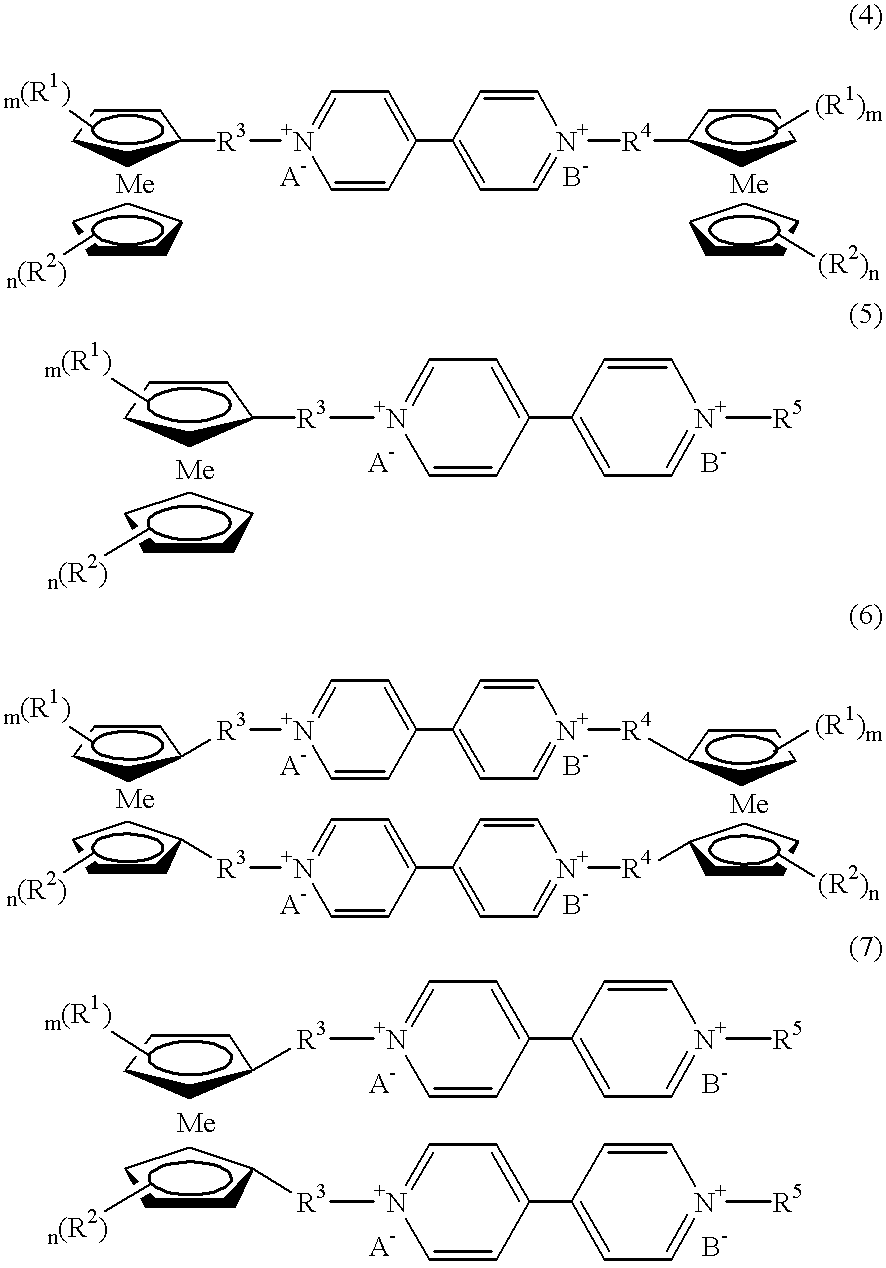Electrochromic Device
a technology of electrochromic devices and vacuum apparatuses, applied in the field of electrochromic devices, can solve the problems of large-scale vacuum apparatuses, electric production costs, electrochromic devices, etc., and achieve the effect of low electric voltag
- Summary
- Abstract
- Description
- Claims
- Application Information
AI Technical Summary
Benefits of technology
Problems solved by technology
Method used
Image
Examples
example 2
[0475] A mixed solution was prepared by mixing 1.0 g of methoxypolyethylene glycol monomethacrylate (the number of oxyethylene unit: 4) manufactured by SHIN NAKAMURA CHEMICAL CO. LTD. under the trade name of M40GN, 0.02 g of polyethylene glycol dimethacrylate (the number of oxyethylene unit: 9) manufactured by SHIN NAKAMURA CHEMICAL CO. LTD. under the trade name of 9G, 4.0 g of propylene carbonate, 0.02 g of 1-(4-isopropylphenyl)-2-hydroxy-2-methylpropane-1-on, and 0.15 g of 3-(5-methyl-2H-benzotriazole-2-yl)-5-(1-methylethyl)-4-hydroxybenzene propanoic acid. To the mixed solution was added tetrafluoroboric acid tetrabutylammonium salt and a compound represented by the formula below such that the concentration of each compound is made to 0.1M and 30 mM, respectively, thereby obtaining a homogeneous solution. 82
[0476] The homogeneous solution was deaerated and injected into a cell prepared by the procedures of EXAMPLE 1 through the injection port.
[0477] After the injection port was s...
example 3
[0479] A smart window was prepared by following the procedures of Example 2 except for using a compound represented by the formula below as a chromogenic material. 83
[0480] The smart window when assembled was not colored and had a transmittancy of about 76%. The smart window was quick in response to the application of an electric voltage and colored in green ,i.e., exhibited excellent electrochromic properties. The smart window was colored in blue-green upon application of a voltage of 1.0 v and had 22% transmittancy of 633 nm wavelength light. Coloring and bleaching operations were repeated every 10 seconds, but no remnant coloration was observed even after the lapse of about 1,000 hours.
example 4
[0481] An electrochromic mirror was prepared by following the procedures of Example 2 except for using a compound represented by the formula below as a chromogenic material and providing a reflective layer on either one of the ITO-coated substrate. 84
[0482] The mirror when assembled was not colored and had a transmittancy of about 70%. The mirror was quick in response to the application of an electric voltage and colored in green, i.e., exhibited excellent electrochromic properties. The mirror was colored in blue-green upon application of a voltage of 1.0 V and had 8% transmittancy of 633 nm wavelength light. Coloring and bleaching operations were repeated every 10 seconds, but no remnant coloration was observed even after the lapse of about 500 hours.
PUM
 Login to View More
Login to View More Abstract
Description
Claims
Application Information
 Login to View More
Login to View More - R&D
- Intellectual Property
- Life Sciences
- Materials
- Tech Scout
- Unparalleled Data Quality
- Higher Quality Content
- 60% Fewer Hallucinations
Browse by: Latest US Patents, China's latest patents, Technical Efficacy Thesaurus, Application Domain, Technology Topic, Popular Technical Reports.
© 2025 PatSnap. All rights reserved.Legal|Privacy policy|Modern Slavery Act Transparency Statement|Sitemap|About US| Contact US: help@patsnap.com



